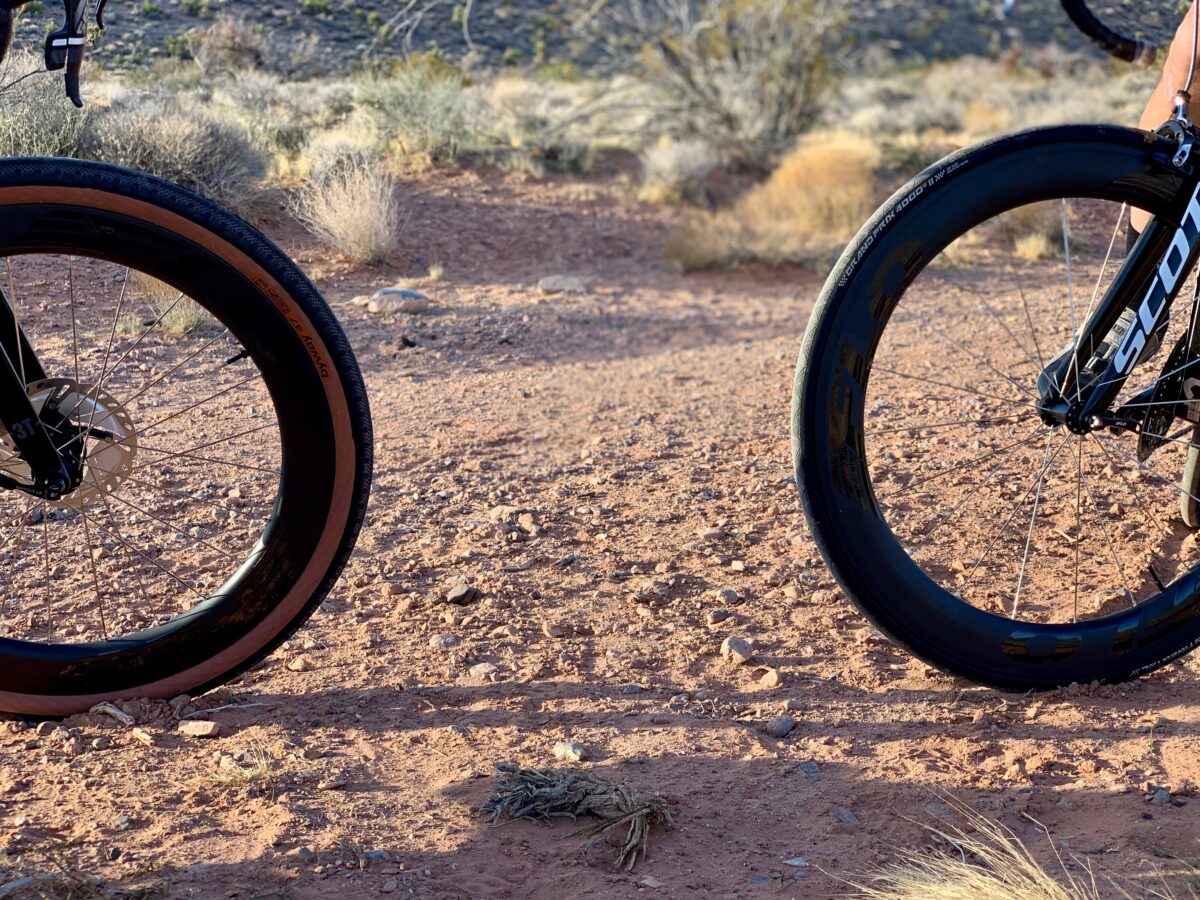Cycling wheels are one of the closest components to the surface of road and their design and materials can significantly impact the ride quality. (Note: a wheel does not include a tire.) One of the factors that affects the ride quality is the wheel’s ability to absorb vibration generated from the road surface. Carbon fiber and aluminum are two popular materials used in cycling wheel construction, and they have different properties that can impact their ability to absorb vibration. In this article, we’ll explore which material, carbon fiber or aluminum, absorbs vibration better for cycling wheels.
Why Does Absorbing Vibration Matter?
You may be wondering why absorbing vibration matters? Vibration leads to excess movement of muscles, which creates more friction in the muscle bodies leading to lower performance. By reducing the amount of vibration that you experience as a cyclist, you reduce fatigue. Ultimately, you save watts and end up performing better when you properly manage vibration.
A Bit About Vibration
We’ve been studying vibration in cycling wheels and have seen that roads produce a wide range of frequencies for the cyclist—both low frequency and high frequency vibrations. Low frequency vibrations can be assumed to be below 100 Hz and high frequency vibrations and be assumed to be above 100 Hz. Vibration relates to cycles per second. 1 Hz is 1 cycle per second where 100 Hz would be 100 cycles per second. Now, let’s look at how each material absorbs vibration.

Carbon Fiber Cycling Wheels
Carbon fiber wheels are known for their light weight, stiffness, and durability, making them a popular choice for high-performance cycling. Carbon fiber is a composite material made of carbon fibers and a resin matrix, which gives it excellent dampening properties. The resin matrix in carbon fiber wheels can deform and recover under the influence of vibrations, generating heat that dissipates the vibration energy. This viscoelastic behavior makes carbon fiber an effective material for absorbing high-frequency vibrations.
Additionally, carbon fiber’s stiffness and low mass can improve the ride quality by reducing the amount of energy lost due to flexing of the wheel during pedaling. This stiffness can also reduce the amount of road vibration transferred to the rider’s hands and feet.
Another important factor in some, but not all, carbon fiber cycling wheels is the rim profile. Carbon rims that have a deep profile and a spoke bed at the smallest diameter of the rim get the benefits of a leaf spring effect in the walls of the rim profile. As vibration moves through the rim profile, the thin walls act as leaf springs further dampening the vibration and absorbing lower frequency vibrations. This is major advantage for carbon wheels since they can reduce vibration in both high and low frequency ranges when properly designed. All FLO Wheels incorporate a leaf spring effect in their design and make for a very smooth ride on the road and gravel.
Aluminum Cycling Wheels
Aluminum wheels are also a popular choice for cycling wheels due to their affordability, durability, and stiffness. Aluminum has a high damping capacity, which makes it an effective material for absorbing low-frequency vibrations. The high damping capacity of aluminum is due to the internal friction between aluminum atoms, which can deform and absorb vibration energy efficiently. What aluminum rims do not do well is absorb high frequency vibrations and the design of the rim shape cannot improve this. This leaves a cyclist with high frequency moving through the body.
Additionally, aluminum wheels’ stiffness can reduce the amount of flexing during pedaling, which can improve the energy transfer from the rider to the wheels. This stiffness can also reduce the amount of road vibration transferred to the rider’s hands and feet.
Carbon Fiber vs. Aluminum Cycling Wheels: Which Absorbs Vibrations Better?
When you are deciding between a carbon and aluminum wheel, carbon is known to have better vibration absorption than aluminum for cyclists. As previously mentioned, roads produce both a high and low frequency vibrations. Especially with the addition of a carbon leaf spring makes the carbon rim a clear winner.
Carbon also allows for a custom layup of the fiber to give benefits when absorbing vibration. Aluminum rims are extruded and you are not able to modify a layup like you are with carbon rims.
A deep profile wheel rim, like the FLO All Sport and Gravel wheel lines, also produces superior aerodynamics. Aluminum rims are not designed to have deep profiles. The aerodynamic advantage is also another reason to go with a carbon rim when selecting wheels for road or gravel cycling.
It’s worth noting that the design of the cycling wheels, spoke count, and hub design, can also impact their ability to absorb vibration. Therefore, when choosing cycling wheels, it’s essential to consider all factors, including the materials used and the design features, to determine the best option for your specific needs.
Finally, tires and tire pressure are also major contributors to vibration absorption but more on this in a future post.
Conclusion
In conclusion, both carbon fiber and aluminum cycling wheels can absorb vibration, but they have different properties that make them better suited for different types of vibration. Carbon fiber wheels with aero profiles are the clear winner when it comes to absorbing vibration from road surfaces.

Co-founder at FLO Cycling. Jon manages the day to day operations and acts as the lead engineer for all FLO products.
